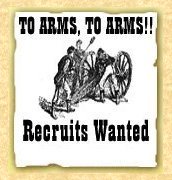As the first major battle of the War Between the States was raging at Manassas, VA on July 21st, 1861 a company of extraordinary men was forming in Darlington, SC. Comprised of members from the disbanded Darlington Guard antebellum militia and volunteers from around the district, they adopted the nickname “The Pee Dee Rifles”. Their first captain was David Gregg McIntosh, a brilliant lawyer from Darlington and former officer of the Guards. The Rifles were assigned to the 1st SC Volunteer Infantry under Col. Maxcy Gregg as Co. D and left for Virginia on Aug. 15th, 1861. Upon reaching Richmond, the entire company volunteered for the duration of the war, the first unit from the Pee Dee to do so.
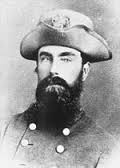
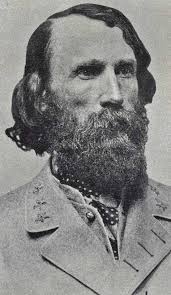
Col. Maxcy Gregg and Lt. Gen. A. P. Hill
The regiment spent the winter of 1861-62 in Suffolk, VA where Col. Gregg presented the Rifles their distinctive colors—a fine silk state flag sewn by Ms. Louisa McIntosh (the captain’s sister) and “the ladies of Society Hill”. But Gregg’s regiment comprised one more company than regulations allowed, so Co. D was selected to convert to light artillery. The Pee Dee Rifles were now the Pee Dee Light Artillery, or officially, McIntosh’s SC Battery. They were given two 12pdr. howitzers and 2 3-in rifles and assigned to now Brig. Gen. Gregg’s Brigade, A.P. Hill’s Light Division of Jackson’s Corps. Capt. McIntosh drilled his men on their guns incessantly that winter, quickly turning infantrymen into artillerymen.
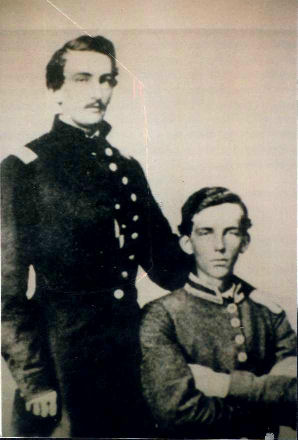
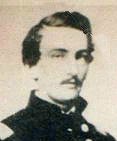
Col. David Gregg McIntosh (Standing & Right)
and his younger brother Lt. Edward McIntosh
In Feb. 1862, the Battery was ordered to Goldsborough, NC but remained only a few days when they were sent to Massaponax Church near Fredericksburg. Finding the rifles wholly inaccurate, the men sent them back to Richmond to be melted down. In their place, a brass 12-pdr howitzer and a rifled 6-pdr were substituted. The Battery’s first baptism of fire was at Beaver Dam Creek on June 26th, 1862. Ordered to silence the Federal artillery shelling the head of the Confederate column, McIntosh unlimbered at a range of 700 yards and was the first of Jackson’s guns to fire. From 4pm until 9 o’clock, the men worked their pieces in support of A.P. Hill’s advance. One howitzer broke an axle and was sent to the rear, and four horses were killed. McIntosh reported that each of his guns had fired at least 160 rounds each—one howitzer fired 239 rounds, so much that the bronze melted and the tube drooped at the trunions. That night, the barrel glowed white hot and the piece was eventually abandoned.
The next day, the Battery resumed its fire, but quickly ran out of ammunition and retired. At midnight, they were re-supplied and took off after Hill’s infantry now at Gaines’ Mill. Late in the action, McIntosh was ordered to relieve Crenshaw’s mauled VA battery, but smoke, heavy woods, and the presence of friendly troops limited their fire to just a few rounds. Gen. Gregg soon ordered them to retire, but not before Capt. McIntosh had two horses shot out from under him. Although under constant fire, the Battery was a spectator to the rest of the Seven Days’ battles.
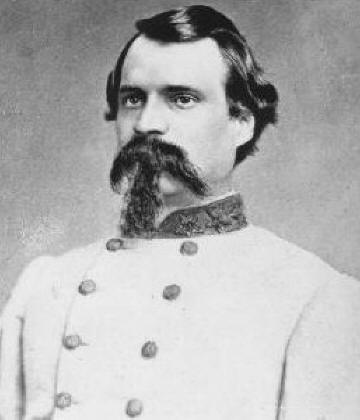
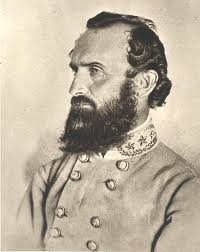
Lt. Col. Lindsay Walker and Lt. Gen. Stonewall Jackson
Below Richmond, the men enjoyed a little rest and re-supply. A reorganization of the artillery in Lee’s army placed the Pee Dee Lt. Arty. Under Lt. Col. Lindsay Walker’s artillery battalion, assigned to the Light Division. In mid-August, Jackson was on the move shadowing Pope’s Union army. On the 24th, the Battery exchanged fire with their Federal counterparts across the Rappahannock River at Warrenton Springs. After a hard two-day, 50-mile march, the PDLA helped drive off a New Jersey brigade that marched into Manassas Junction---not knowing that it had fallen into Confederate hands. The Battery was now equipped with a 3-in rifle, a 12pdr. howitzer, and two 6pdr. Howitzers. Aug. 28th saw the men under fire near Groveton. The following day Pope launched a major assault on Jackson at Second Manassas. McIntosh took up position on Jackson’s left, on a small rise behind Gregg’s men. The Battery help beat off three determined attacks against Gregg, raking the Federal infantry with deadly shot and canister. At one point in the battle, a Union battery unlimbered on a hill that McIntosh had zeroed in on early in the fight. A few well-placed shots from the rifle destroyed one gun and exploded a caisson, sending the enemy scattering. The action cost McIntosh one killed and one wounded.
The exhausted men followed Gregg out to Ox Hill the next day in pursuit of the retreating Federals. Here, Pope’s rear-guard counterattacked and the Battery held its position despite having to work the guns in a driving rainstorm. At the beginning of September, 1862 the brave men from Darlington District marched with Lee’s army into Maryland. On the 15th, they were camped at Charlestown, WV after a “heavy, hungry” trek. The next morning, the Battery had the honor of signaling the attack on Harper’s Ferry. Despite several wounded comrades, Cpl. James Thwing pushed his howitzer right up to the enemy’s earthworks before the garrison surrendered. Being one of the first units into town, the PDLA got its fair share of the spoils, including a 10lb. Parrott rifle, a 12pdr. Napoleon, and a full compliment of horses, limbers, and caissons. Around 10am on Sept. 17th, McIntosh received orders to limber up and move quickly to Sharpsburg, MD. Crossing the Potomac at Shepardstown, the Battery moved as fast as they could but the heat of the day caused many of the cannoneers to fall behind. McIntosh decided to leave the howitzer behind so as to have enough men to man the other three pieces.
At first, the guns went into action at Blackford’s Farm until Gen. Hill ordered the Battery forward to support Kemper’s VA brigade just south of Sharpsburg. Unlimbering in a field along the Harper’s Ferry Road, the men saw Burnside’s entire Union corps marching toward their position. Without hesitation, the Battery opened with canister, then double canister, blowing huge gaps into the advancing blue line despite a hail of minie balls and Federal artillery fire. Young Baxter Rollins, the Battery’s guidon, rushed to the gun line after seeing the No.4 on the Napoleon go down. Planting the colors between the guns, he took over the position. In the process of firing the piece, he was struck in the back by shrapnel, mortally wounded. As he fell, he discharged the piece and the recoil rolled the gun back, crushing both his feet. As his compatriots bore him off, Baxter pleaded, “Don’t take me to the rear, boys. I know I got to die. Let me die by my flag.” So taken by the bravery and sacrifice of Rollins, the survivors of the unit paid special homage to him at every reunion after the war.
Despite the Battery’s best efforts, the Union infantry were too numerous. The men worked the guns until they were within 60 yards of the position, when McIntosh ordered the guns abandoned. But the Pee Dee Lt. Arty had done Lee’s army a huge service---they bought time for A.P. Hill to reach the field. The arrival of Gregg’s infantry and a counterattack by Toombs’ Georgians prevented the guns from being carried off the field. After the Federals were pushed back, the men returned to their guns and fired in support of the Confederate infantry until dark. The Battery lost one killed, two wounded, and every horse acquired in Harper’s Ferry was killed or disabled. Afterward, Col. Walker counted 80 dead Federals in front of one of the Battery’s guns alone. The men re-crossed the river two days later and went into camp near Bunker Hill, VA. For almost two months, the men enjoyed a much-needed R&R.
The end of November 1862 saw the Battery on the move with Jackson’s Corps. After a feign toward Winchester, they wheeled around and marched to Fredericksburg. The Army of the Potomac was poised to strike across the Rappahannock, but Lee was digging in on the heights above the town. Walker’s Battalion went into position at Hamilton’s Crossroads on Dec. 13th, with the PDLA on the left atop a wooded crest. They came under a withering Federal barrage, but had orders to save their fire for the Yankee infantry. Still, the Battery helped repel six charges against Jackson’s center, four of which required the use of double-canister to drive the Federals back. McIntosh would report that he’d “never seen the guns worked so beautifully” by his men than at Fredericksburg. The fight took a dreadful toll on the Battery—26 of the 66 men present were killed or wounded. Two guns were also dismounted, a limber and caisson exploded, and 25 horses were lost. At nightfall, the Battery was relieved to replenish their ammunition. Before dawn, an impressed Gen. Jackson ordered “those same boys that were up there yesterday” back onto the front line and the PDLA went back into position. Col. Walker relieved them a short time later, however.
McIntosh went into winter quarters at Milford Station and the Battery remained there until spring. The intrepid captain was promoted and given his own artillery battalion after another reorganization. In his place, Ervin Brunson was made captain. Brunson, from the Ebenezer section of Darlington District, was a capable officer although not wholly popular. Col. Walker was put in command of Jackson’s reserve artillery, and Major Willie Pegram took his place. The Battery left for Chancellorsville on April 29th, arriving early the next morning. Lt. E.K. Dargan’s section accompanied Jackson on a reconnaissance that day, returning after nightfall. After following the corps around Hooker’s right flank, the Battery went into position near an old shop along the Chancellorsville road. When Jackson launched his famous attack, Brunson ordered the Napoleon forward to support Hill’s troops while the rest of the Battery engaged Union artillery at Fairview Heights. The Napoleon soon returned after being driven back by heavy fire. A lucky shot exploded a caisson, killing three and wounding four including Sgt. Maj. A.J. Rugg mortally. Pegram soon afterward ordered the entire Battery forward, but lack of good ground forced Brunson to return at nightfall. Later that evening, Gen. A.P. Hill ordered Brunson to send a rider to find Gen. Stuart. Ervin’s nephew, Ordnance Sgt. Joseph Brunson, volunteered and took off with the word of Jackson’s wounding. Sometime after midnight, Joe came across some of Stuart’s cavalry who took him to Gen. Fitzhugh Lee. Brunson accompanied Lee to Stuart’s headquarters and the message was delivered.
May 3rd dawned with the Pee Dee Lt. Arty moving along the Orange Turnpike toward Chancellorsville. The unit occupied some abandoned Federal works and began exchanging long-range fire with the Federal guns near U.S. Ford. This action resulted in four wounded and 8 horses killed. Afterwards, the Battery returned to Milford to rest and recruit. In attempts to unify the armament of the army’s artillery, Brunson received three 3-in Ordnance Rifles to replace his other guns. On June 15th, 1863 the PDLA began the long march northward to begin the Gettysburg Campaign. They crossed the Potomac and camped near South Mountain on the 27th. The opening day of that historic battle found the Battery deployed along the Chambersburg Pike with Pegram’s battalion. They put accurate counterbattery fire into the Union guns along McPherson Ridge, forcing one Federal battery to move three times. Once the enemy artillery was silenced, the guns were turned on the troops of the Union I Corps. The seasoned artillerymen kept a steady fire until dark. One of the rifles broke an axle during the engagement and was retired. On July 2nd, with the rifle repaired, Capt. Brunson was strangely absent from duty and command of the Battery fell to Lt. W.E. Zimmerman. The PDLA was advanced to Seminary Ridge, about a mile south of the Hagerstown Road. They engaged the enemy wherever they could, particularly the batteries of the Union XI Corps around Cemetery Hill. On the 3rd, they were part of the barrage that preceded Pickett’s Charge—their long-range rifles belching hot iron into the positions of the Union XVI Corps. Gettysburg would cost the Battery 2 killed, seven wounded, twenty horses, and one caisson exploded.
Upon its return to Virginia, the PDLA went into camp near Orange Court House. They would take part in several smaller engagements, including A.P. Hill’s disastrous march against Bristoe Station in mid October and Jubal Early’s Mine Run Campaign in Nov.-Dec. At Verdiersville during the latter action, the Battery fired in support of Early’s artillery, allowing them to disengage from the fight. A few days latter, the men took part in a heavy cannonade between Hill and Meade near Rexville. The rest of the winter was fortunately quite. By the time Grant launched his Overland Campaign in May, 1864 the PDLA was is dire need of equipment and horses, the lack of which prevented them from participating in the Wilderness fight. But they did take part in the battles around Spotsylvania, where they dug extensive redoubts in between sharp fights with Burnside’s artillery. Zimmerman, now captain after Brunson was cashiered, lost one killed and three wounded. He also was faced with the fact that his battery was in unsatisfactory condition. Unable to recruit and losing men to battle and disease, there were hardly enough men to man three guns.
But the men of the Pee Dee Light Artillery endured, and followed Lee across the Chickahominy River toward Cold Harbor to cut off Grant’s approach to Richmond. The Battery reached the field early on the morning of June 3rd and dug in to support Mahone’s brigade. At 4:30am, the Federals attacked, but Zimmerman was forced to wait until sunrise to go into action. When friendly troops moved into their line of fire, the men paused---and began picking blackberries around their position. The Yankees managed to push to mountain howitzers to the front for fire support, and sent canister rounds toward the Battery’s position. The men went back to work and drove the enemy guns off. After Cold Harbor, there was talk that the Battery might be folded into the infantry. A concerned Capt. Zimmerman approached Lt. Col. McIntosh with this, and an exchange with Gen. Ripley in Charleston was reached. Capt. Gregg’s McQueen Light Artillery would replace the Battery, and the Rifles would take their place in the defense of Charleston.
The men arrived there in late June 1864 and were assigned as heavy artillery on James Island. Officially they were Co.D of the 18th SC Artillery Battalion, but the men (and reports) continued calling themselves the Pee Dee Light Artillery, or simply Zimmerman’s Battery. Within a couple of months, the unit grew to 150 men rank and file. Until January 1865, the men continued to work the heavy guns at Battery Ryan. Soon afterwards, the Battery was given four light field pieces with equipment and horses and reverted back into their role as light artillery. Morale soared through the unit. The Rifles reported to Capt. W.E. Earle at Pocotaligo and joined other artillery units preparing to resist Sherman’s advance into South Carolina. On Feb. 2nd, the Battery played a small role at River’s Bridge, shelling the narrow causeway the Federals were attempting to use to cross the Salkahatchie River. That evening, Gen. McLaws ordered Zimmerman to Branchville, SC. Eventually, they would join the exodus of Hardee’s troops, passing through their homes in the old Darlington District in route to Cheraw and North Carolina. The Battery, now assigned to Col. Del Kemper’s Reserve Artillery of Hardee’s Corps, did not see action at Averysboro. March 21st, the last day of the Battle of Bentonville, NC saw the battery in reserve, but was called up when Gen. Mower’s Federals nearly cut Johnston’s line of retreat.
The Pee Dee Light Artillery surrendered its guns near Hillsborough, NC on April 29th, 1865. But in a last act of honor, the Battery refused to surrender its beloved flag. Guidon R.C. Nettles wrapped it around his body underneath his clothes. Upon returning home, the survivors of the unit gave the flag back to Ms. McIntosh, who kept it until 1878. That year, the Pee Dee Lt. Artillery Survivors Association was formed, and the flag was returned to the old Battery. Every year until 1916, on July 21st (the date the unit formed), the Survivors gathered to remember and continue their comradery. The Association donated the flag to the SC General Assembly in 1904. Its tattered remains now are held in the Confederate Relic Room. The Pee Dee Rifles Camp flag is a reproduction of that gloried banner.
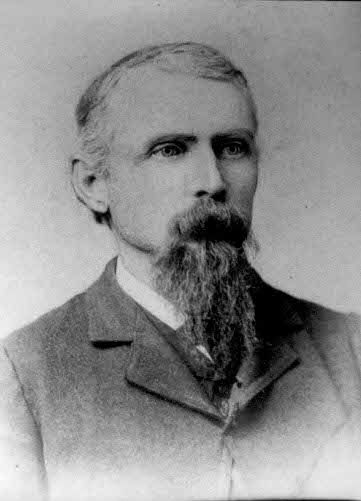
1st Sgt. Joseph Woods Brunson of the Pee Dee Light Artillery.
Not only did he serve with distiction with the battery throughout the war, he wrote a history of the unit afterwards. He also formed the Pee Dee Artillery Survivor's Association in 1878, which met every July 21st (the date the unit was formed) until 1916.
|







